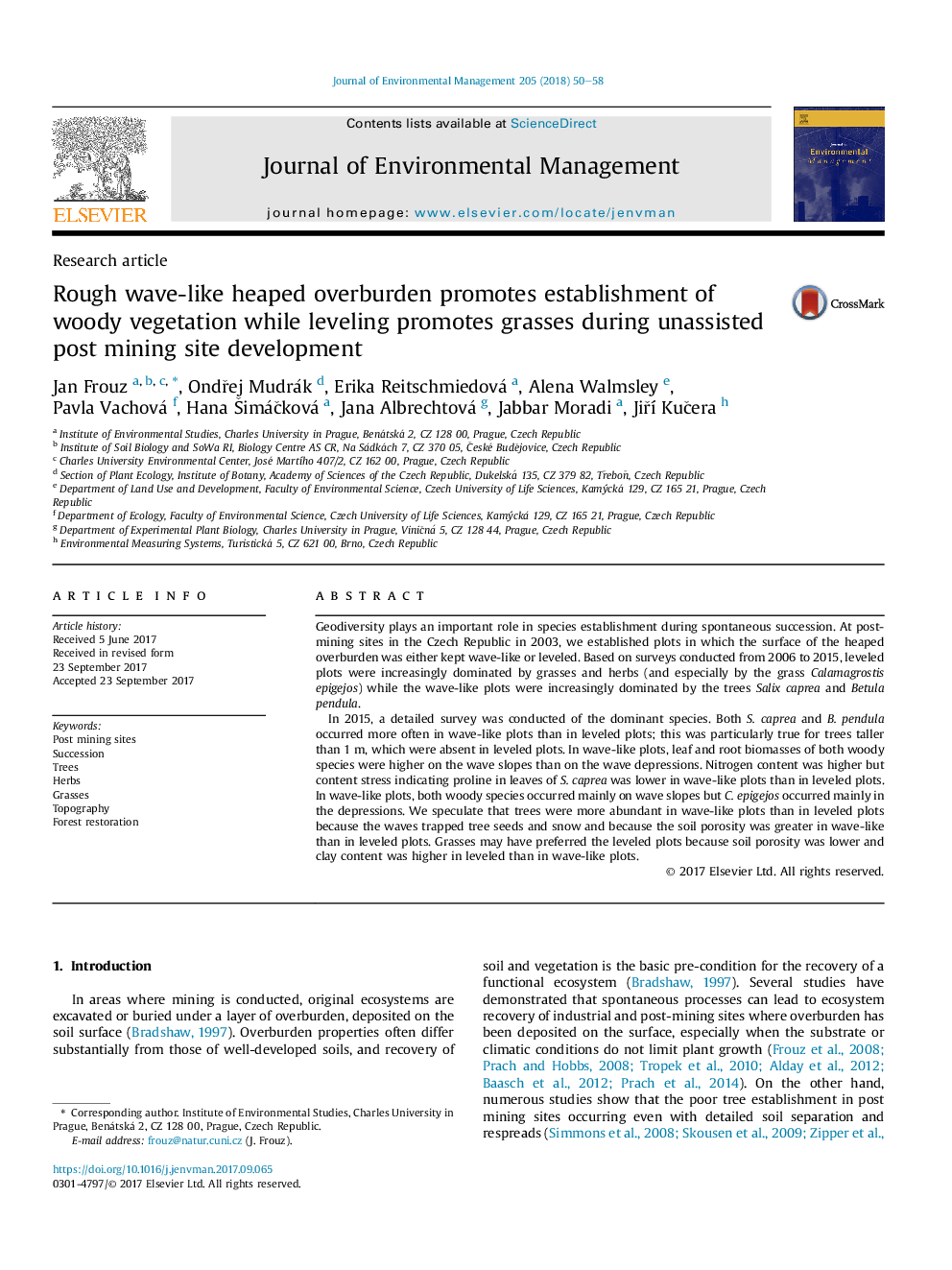| Article ID | Journal | Published Year | Pages | File Type |
|---|---|---|---|---|
| 5116208 | Journal of Environmental Management | 2018 | 9 Pages |
Abstract
In 2015, a detailed survey was conducted of the dominant species. Both S. caprea and B. pendula occurred more often in wave-like plots than in leveled plots; this was particularly true for trees taller than 1 m, which were absent in leveled plots. In wave-like plots, leaf and root biomasses of both woody species were higher on the wave slopes than on the wave depressions. Nitrogen content was higher but content stress indicating proline in leaves of S. caprea was lower in wave-like plots than in leveled plots. In wave-like plots, both woody species occurred mainly on wave slopes but C. epigejos occurred mainly in the depressions. We speculate that trees were more abundant in wave-like plots than in leveled plots because the waves trapped tree seeds and snow and because the soil porosity was greater in wave-like than in leveled plots. Grasses may have preferred the leveled plots because soil porosity was lower and clay content was higher in leveled than in wave-like plots.
Related Topics
Physical Sciences and Engineering
Energy
Renewable Energy, Sustainability and the Environment
Authors
Jan Frouz, OndÅej Mudrák, Erika Reitschmiedová, Alena Walmsley, Pavla Vachová, Hana Å imáÄková, Jana Albrechtová, Jabbar Moradi, JiÅà KuÄera,
